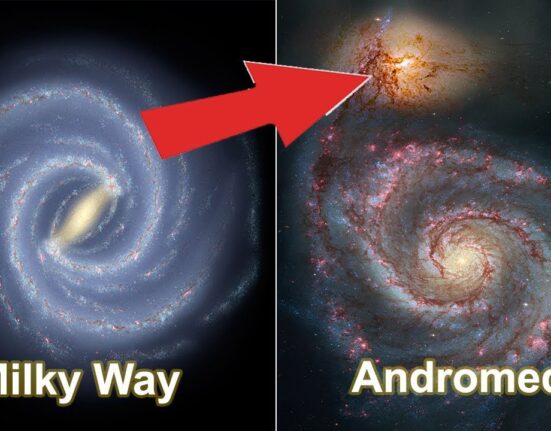Tonight, as you gaze up at the sky, searching for familiar constellations and perhaps making a wish upon a shooting star, you may notice something unusual – a lunar scar darkening the crescent moon. This celestial event is not only mesmerizing but also holds significance in various cultures and scientific realms.
Legend has it that when the moon displays a darkened area, often referred to as a lunar scar or blotch, it signifies an impending change or challenge. In ancient times, people believed that such occurrences heralded wars, natural disasters, or personal hardships. The mere sight of this phenomenon would send shivers down their spines as they prepared for what was to come.
On a more scientific note, astronomers explain that these lunar scars are caused by variations in surface reflectivity. When certain areas on the moon’s surface fail to reflect sunlight as brightly as others, they appear darker from our vantage point on Earth. Factors such as mineral composition, impact craters, and volcanic activity can all contribute to these differences in reflectivity.
Dr. Celeste Waters, a renowned astrophysicist, sheds light on the phenomenon by stating,
“The moon’s surface is like a giant canvas painted by eons of cosmic events. Each darkened spot tells a story of its own – be it an ancient volcanic eruption frozen in time or the aftermath of a violent collision with space debris.”
As you ponder the mysteries of the cosmos tonight and witness the lunar scar slowly engulfing part of the crescent moon’s brilliance, consider how interconnected we are with the universe. Our ancestors looked up at this same celestial dance thousands of years ago and found meaning in its patterns – a tradition we continue to uphold today.
So next time you catch sight of that mystical lunar scar casting its shadow across our beloved satellite, take a moment to appreciate the beauty and complexity of our cosmic neighborhood. Who knows what secrets and wonders lie beyond that darkened patch on the moon’s surface?








Leave feedback about this